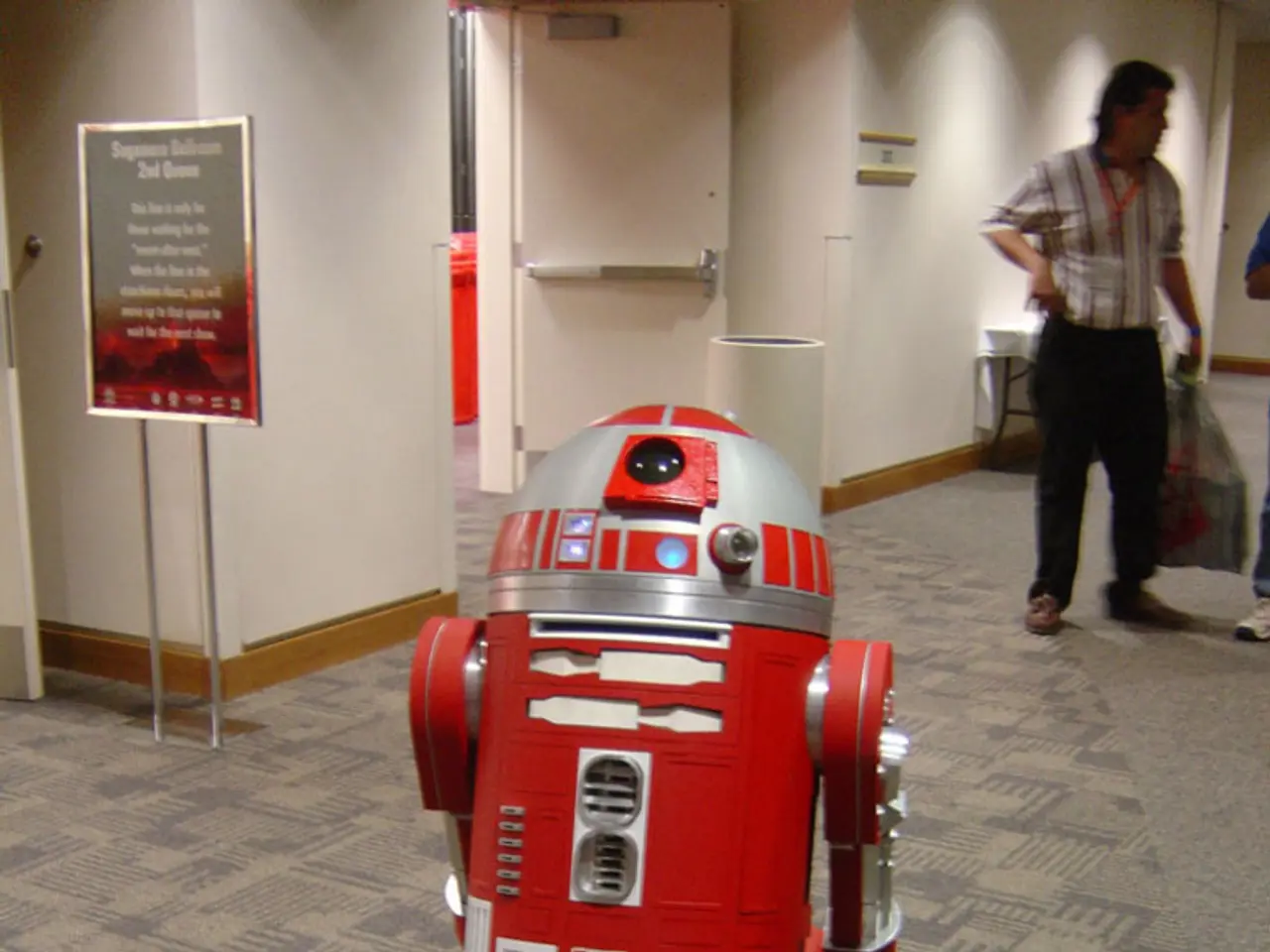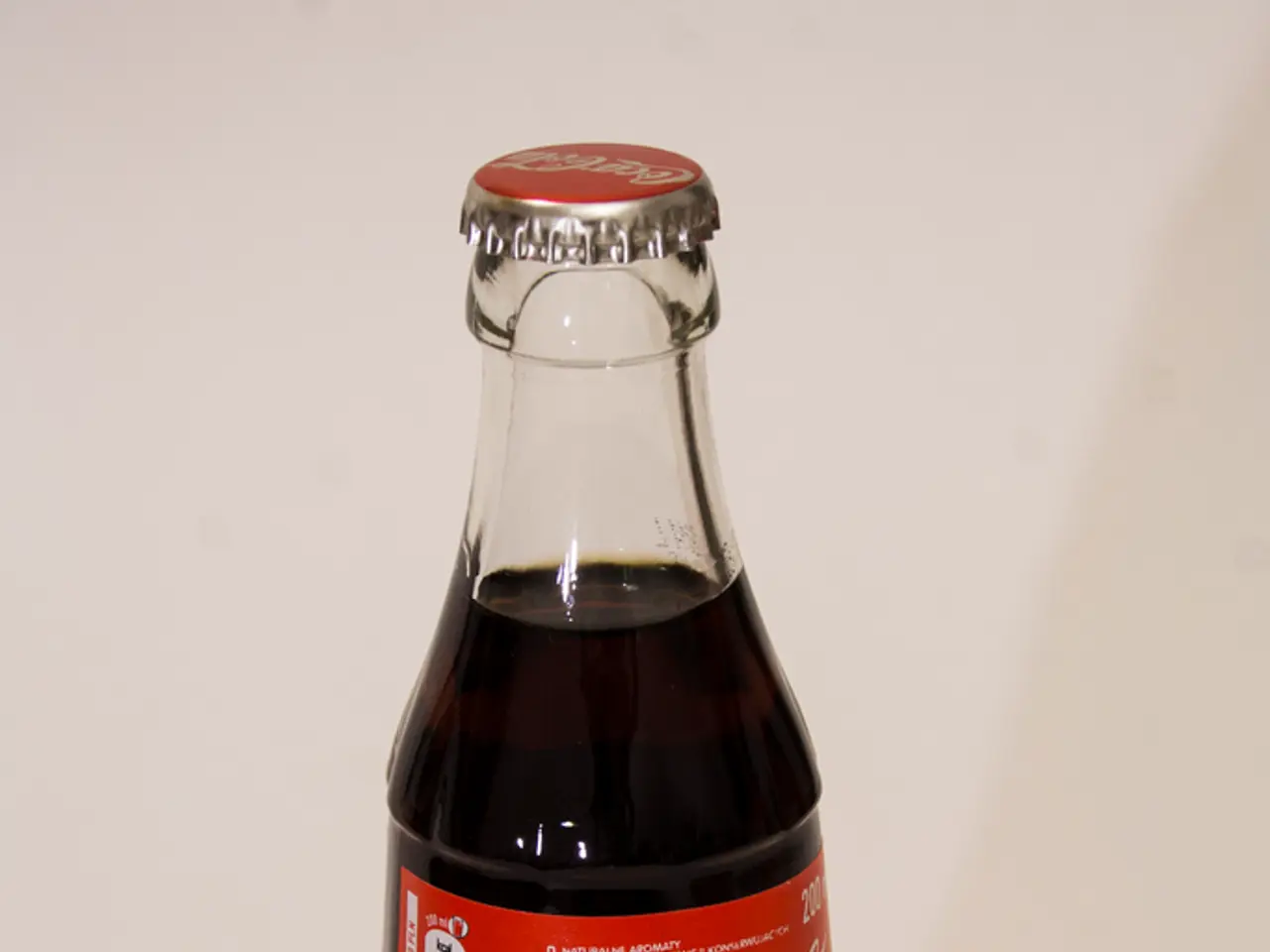Amazon Introduces Vulcan, Sensitive AI Robot with Haptic Capabilities
In a groundbreaking development, Amazon's latest innovation, the Vulcan robot, is set to redefine the landscape of warehouse automation and human-robot collaboration [1][3]. This tactile-sensing AI robot, designed for use in warehouse environments, marks a significant leap forward by incorporating a sense of touch, a critical capability previously absent in commercial robots.
Currently, the Vulcan robot is making a tangible impact in various aspects of Amazon's fulfilment operations. Its tactile handling of items allows it to detect the amount of force it applies when picking up or placing items, enabling it to handle about 75% of item types in Amazon fulfillment centres without causing damage [1][3]. This capability, combined with camera-guided arms, enables Vulcan to identify and manipulate products in crowded bins with high precision.
One of the key advantages of Vulcan is its ability to collaborate seamlessly with human workers. When it encounters an item it cannot handle safely, it alerts human workers to intervene, ensuring that the workflow is not disrupted. This hybrid approach reduces workload and physical strain on human employees, particularly in tasks that require reaching into high or low storage pods, which often involve dangerous or repetitive motions [1][2].
The Vulcan robot functions alongside other Amazon robots, such as wheeled bots and sorting systems, contributing to the fact that about 75% of Amazon’s global deliveries now involve robotic assistance [2][3]. The robot has been deployed at multiple Amazon sites in the U.S. and Europe, including new, robot-intensive fulfillment centres designed to maximise automation and productivity.
Looking ahead, the potential uses and impact of Vulcan are vast. As tactile robotics mature, Vulcan-like systems could be adopted industry-wide, especially by businesses with large-scale warehousing or distribution needs [1][4]. This could lead to broader automation of tasks traditionally reliant on human dexterity.
Improved worker safety and productivity are other significant benefits that Vulcan offers. By automating physically demanding or hazardous tasks, Vulcan can help reduce workplace injuries and ergonomic risks for human workers, fostering safer and more efficient workflows in logistics environments [1].
Beyond Amazon, Vulcan exemplifies a trend towards embodied AI in robotics, where machines can perform a wide range of functions requiring nuanced manipulation [4]. This could extend beyond warehousing to manufacturing, healthcare packaging, and other sectors where precision handling and human collaboration are critical.
However, the advent of tactile AI robots like Vulcan also raises questions about the future of blue-collar jobs in warehousing. Automation may shift labour roles towards oversight and management of robotic systems rather than manual labour, potentially transforming workforce skill requirements [2]. Ethical governance must guide the deployment of such advanced technologies, with concerns including labor impacts, safety regulations, and data privacy at the forefront.
In conclusion, Amazon’s Vulcan robot is currently enhancing warehouse automation by combining tactile sensing with AI for precise handling of goods, enabling safer human-robot collaboration and higher productivity. Its future potential lies in broader industrial adoption, improved worker safety, and evolving labor roles shaped by advanced embodied AI robotics [1][2][3][4].
- The field of robotics witnesses a shift with Amazon's latest innovation, the Vulcan robot, employing reinforcement learning for seamless collaboration in warehouse automation.
- The Vulcan robot, empowered with camera-guided arms and neural networks, demonstrates high precision in manipulating products even in crowded bins.
- This AI-powered robot is not only revolutionizing Amazon's fulfilment operations but also paving the way for computer vision and machine learning technologies in the realm of science.
- With the ability to detect the force it applies when picking or placing items, the Vulcan robot can handle about 75% of item types in Amazon's warehouses without causing damage.
- As tactile robotics advance, the technology could permeate various industries, including healthcare packaging, manufacturing, and sports-betting, where nuanced manipulation is crucial.
- By partnering with human workers when encountering tasks it cannot handle safely, the Vulcan robot contributes to reducing workload and physical strain in logistics environments.
- The deployment of the Vulcan robot sparks discussions on the future of jobs in warehousing, as it could potentially shift labour roles towards managing robotic systems, requiring a new set of skills.
- In the near future, data and cloud computing technology will play a significant role in optimizing the performance of AI systems like the Vulcan robot, enhancing health-and-wellness, and addressing neurological-disorders in medical-conditions.




